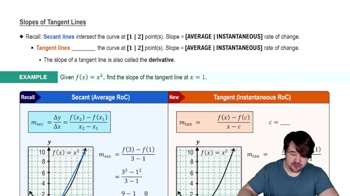Existence of Limits
In Exercises 5 and 6, explain why the limits do not exist.
limx→0 x/|x|
 Verified step by step guidance
Verified step by step guidance Verified video answer for a similar problem:
Verified video answer for a similar problem:



 6:47m
6:47mMaster Finding Limits Numerically and Graphically with a bite sized video explanation from Patrick
Start learning